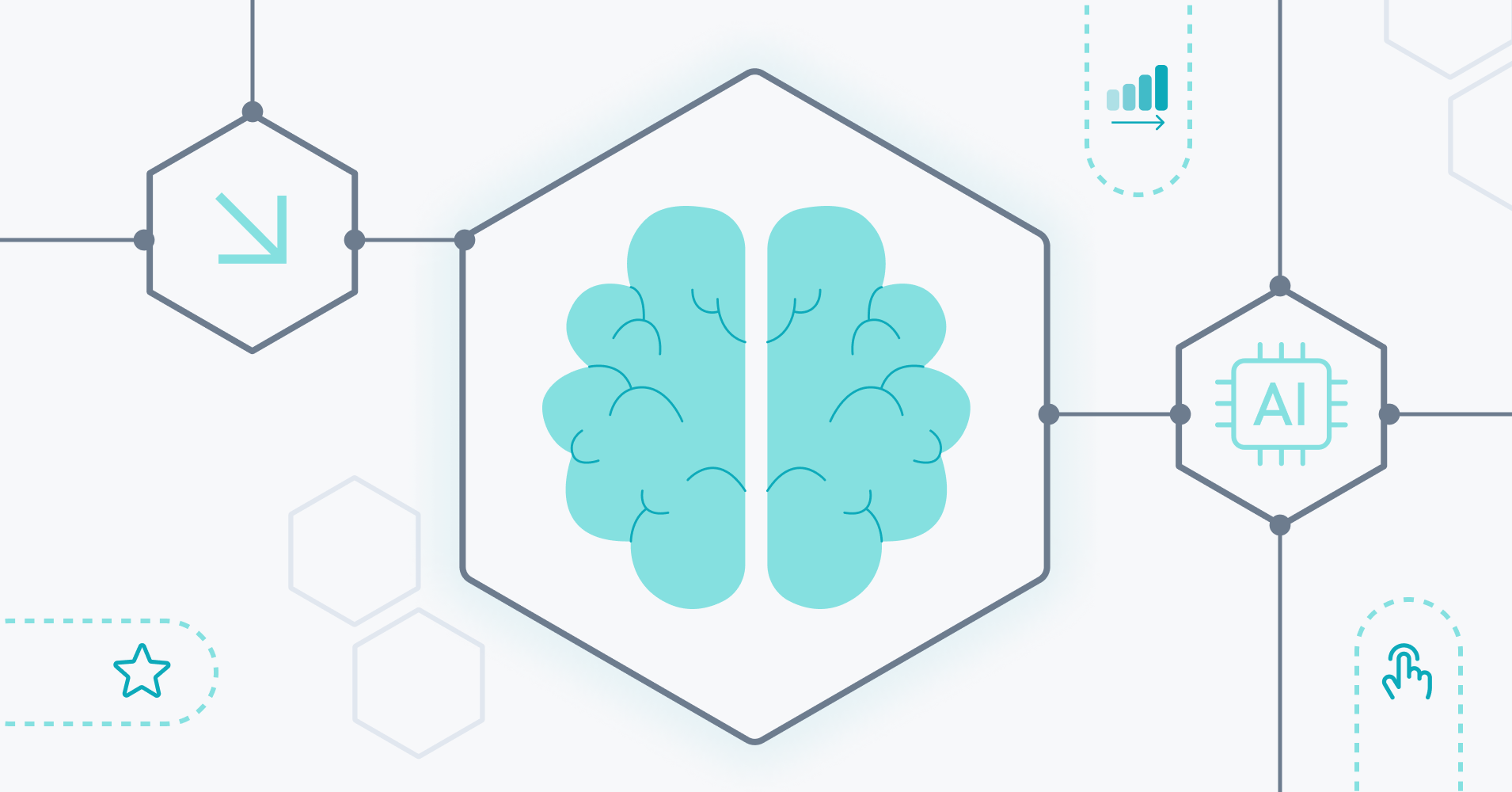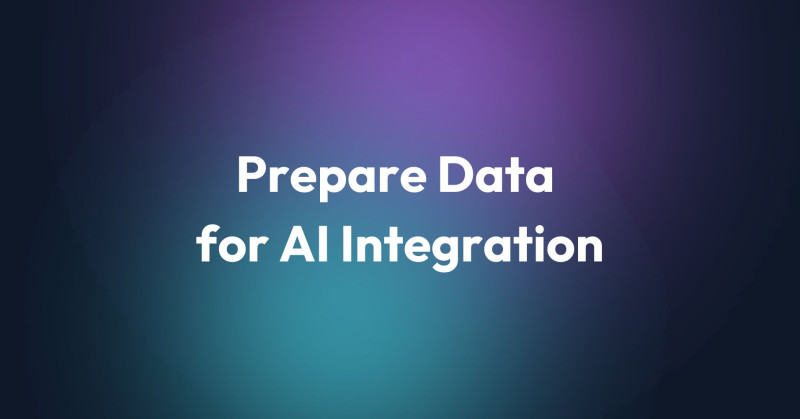NLP solutions are becoming increasingly popular as AI evolves and finds applications across various industries. From transforming customer service in online shops with instant responses to providing accurate language translations, NLP is a game-changer in many areas.

In this article, we’ll explore the key aspects of NLP, offering insights on how and when to integrate it into your business.
What is Natural Language Processing (NLP)?
Natural Language Processing (NLP) is a branch of artificial intelligence that enables computers to understand, interpret, and generate human language. Essentially, it teaches machines to process language the way humans do, allowing them to communicate meaningfully and assist with tasks like understanding text, answering questions, or holding conversations.
Think of NLP as a translator between humans and computers—just as a skilled interpreter helps two people from different countries communicate, NLP bridges the gap between human language and machine understanding, making interactions with technology more natural and intuitive.
NLP encompasses a wide range of tasks, among which are:
Extracting information from unstructured text data.
Translating text from one language to another (machine translation).
Determining the sentiment expressed in a piece of text (e.g., positive, negative, neutral).
Identifying named entities in text, such as people, organizations, and locations.
Answering questions posed in natural language.
Creating a concise summary of a longer piece of text.
Examples of NLP
Search Engines: Understanding User Intent for Better Results
NLP algorithms are at the heart of modern search engines, helping them understand the nuances of human language. When a user types a query into a search engine like Google, NLP processes the words, understands their context, and delivers the most relevant results. It goes beyond simple keyword matching by interpreting the intent behind the search.
How It Works: NLP algorithms use a combination of natural language understanding (NLU) and machine learning to analyze syntax, semantics, and user intent. For example, when you search "best restaurants near me," the search engine recognizes that you’re looking for recommendations based on location, rather than simply displaying pages that include the keywords “restaurants” and “near me.”
Business Impact: For businesses, this means that their content needs to be optimized for how people search—using conversational language, answering questions directly, and providing value. Businesses that leverage NLP in their content strategies (such as optimizing for voice search) can improve their visibility and connect more effectively with potential customers.
Virtual Assistants
NLP enables virtual assistants like Siri, Alexa, and Google Assistant to understand spoken language, interpret user intent, and respond appropriately. These AI-powered assistants use speech recognition combined with NLP to handle commands, answer questions, and even carry out tasks like scheduling appointments or controlling smart home devices.
How It Works: When a user speaks to a virtual assistant, speech recognition technology first converts the voice into text. Then, NLP kicks in to interpret the text, understand the meaning, and trigger the correct action or response. NLP allows these systems to understand complex language patterns, tone, and even follow-up questions in context.
Business Impact: Virtual assistants are changing the way people interact with technology and consume content. For businesses, this presents opportunities to reach customers through new channels. Optimizing services for voice search and integrating with virtual assistants allows businesses to offer better customer support, simplify purchasing processes, and increase accessibility. For example, a user might ask Alexa to reorder a product or book a service, creating a new sales channel for companies.
Chatbots
NLP is the driving force behind chatbots, which are now common in customer service, sales, and even HR support. Chatbots powered by NLP can engage in natural language conversations with users, providing information, answering queries, and resolving issues in real time.
How It Works: NLP allows chatbots to understand and respond to customer queries in a way that mimics human conversation. The system processes the user’s input, detects the intent behind the message, and retrieves the appropriate response. Advanced NLP-based chatbots can handle complex inquiries, learn from previous interactions, and even escalate issues to human agents when necessary.
Business Impact: Chatbots offer businesses a way to automate routine tasks, reduce response times, and provide 24/7 support without the need for human intervention. This improves customer satisfaction, reduces operational costs, and frees up employees to focus on more complex tasks. For example, a chatbot on an e-commerce site can help customers find products, answer shipping questions, and process orders, resulting in a more streamlined shopping experience.
Language Translation
NLP plays a crucial role in language translation, enabling apps and services like Google Translate to convert text from one language to another accurately and in real-time. This technology has opened up global communication and made it easier for businesses to operate across different regions and languages.
How It Works: NLP-powered translation systems use deep learning models trained on vast amounts of multilingual data to understand the grammar, syntax, and cultural context of different languages. The system breaks down the text into meaningful units (like words or phrases), translates them into the target language, and reconstructs the sentence to maintain its original meaning.
Business Impact: For global businesses, NLP-driven translation tools are invaluable for reaching international markets. Whether it's translating product descriptions, marketing content, or customer support documentation, businesses can provide a localized experience that resonates with diverse audiences. Translation apps also make it easier for teams to collaborate across borders and languages, improving operational efficiency.
Sentiment Analysis
Sentiment analysis is one of the most powerful applications of NLP, allowing businesses to analyze large amounts of text (such as reviews, social media posts, or customer feedback) to gauge the emotions and opinions behind the words. This helps companies identify trends, understand customer satisfaction, and adjust their strategies accordingly.
How It Works: Sentiment analysis uses NLP to break down text and classify it as positive, negative, or neutral. More advanced models can detect subtleties in emotion, such as sarcasm or mixed feelings. By analyzing the tone, context, and emotional cues, NLP systems provide insights into how customers feel about a product, service, or brand.
Business Impact: Businesses can leverage sentiment analysis to track customer opinion in real time, helping them make data-driven decisions. For example, a company may use sentiment analysis to monitor social media for negative feedback about a product launch and respond quickly before issues escalate. Similarly, it can help identify brand advocates and influencers, allowing businesses to amplify positive sentiments. Insights from sentiment analysis also inform product development, customer service improvements, and marketing strategies.
Why NLP Matters for Businesses Today?
NLP offers significant benefits for businesses, including:
Top-Notch Customer Service
NLP-powered chatbots enable businesses to provide 24/7 customer support, answering inquiries quickly and efficiently. These AI-driven systems can handle routine queries, allowing human agents to focus on more complex issues, ultimately improving customer satisfaction and reducing operational costs.
Read more: Why is it worth implementing Chatbots and NLP solutions in your company?
Enhanced Data Analysis
NLP helps businesses analyze unstructured data, such as customer reviews and social media posts, to extract valuable insights. By understanding sentiment, trends, and customer preferences, companies can make more informed decisions and adjust strategies in real time.
Increased Productivity
By automating tasks like document classification, summarization, and data extraction, NLP saves time and resources for businesses. This automation reduces manual workloads, allowing teams to focus on higher-value tasks and improving overall operational efficiency.
Improved Marketing
NLP can enhance marketing efforts by personalizing content and targeting specific customer segments based on their preferences and behavior. This allows businesses to create more relevant campaigns, increasing engagement and conversion rates.
Using Natural Language Processing in Chatbots
One of the most common usage of NLP is in chatbots. We've already covered the topic of how AI chatbots work, so now let's have a brief recap of what they can do:
Provide Better Customer Support
Chatbots equipped with NLP can handle a wide range of customer inquiries, from answering frequently asked questions to troubleshooting issues. By providing instant responses, they enhance the overall customer experience while reducing the workload on human support teams.
Generate Leads
They can proactively engage with visitors on a website or app, asking questions to gather valuable customer information. They can qualify leads by assessing user needs and directing them to appropriate services or sales representatives, streamlining the lead generation process.
Offer Custom Recommendations
Using customer data and preferences, chatbots can deliver personalized product or service suggestions. By understanding individual behaviors and interests, they create a more tailored shopping experience, increasing the likelihood of conversions and customer satisfaction.
Provide Entertainment
Chatbots can be designed to entertain users through interactive experiences like games, quizzes, or storytelling. This use of NLP fosters engagement and keeps users coming back, creating opportunities for brands to deepen their connection with audiences through fun and immersive interactions.
To create a chatbot that can engage in meaningful conversations, NLP techniques such as natural language understanding, natural language generation, and dialogue management are essential.
How NLP model is created?
Data Collection
The first step in training an NLP model is gathering large amounts of text data relevant to the task at hand. This data can come from a variety of sources such as:
- Social media posts
- Books or articles
- Customer service logs
- Product reviews
- Emails or chat transcripts
For example, if you're training a chatbot for customer service, you would gather past customer inquiries and support responses.
Data Preprocessing
Before training can begin, the text data needs to be cleaned and transformed into a format that the machine learning model can understand. This involves:
- Tokenization - Breaking down sentences into words or tokens.
- Lowercasing - Converting all text to lowercase to reduce variation.
- Removing stop words - Filtering out common words like "and," "is," or "the" that don’t add much meaning.
- Stemming and Lemmatization - Reducing words to their base or root form (e.g., "running" to "run").
- Encoding - Converting text into numerical form (since machine learning models only process numbers). This can be done using techniques like word embeddings (e.g., Word2Vec, GloVe) or more advanced methods like transformers (BERT, GPT).
Model Selection
Next, you need to choose an appropriate machine learning model for your NLP task. Some common options include:
- Recurrent Neural Networks (RNNs) or LSTMs: Often used for tasks that require understanding sequential data, like text generation or machine translation.
- Transformers: More advanced models like BERT, GPT, or T5, which have revolutionized NLP tasks due to their ability to capture contextual relationships in language more effectively.
The choice of model depends on the task:
- Classification (e.g., sentiment analysis, spam detection)
- Text generation (e.g., chatbots, automatic content creation)
- Entity recognition (e.g., identifying names, locations, or products)
- Language translation
Model Training
Once the data is preprocessed and the model is selected, the actual training process begins. Here’s what happens:
- Input: The numerical representation of the text (after encoding) is fed into the model.
- Learning: The model is trained on the data using a training algorithm (e.g., backpropagation). It adjusts its parameters (weights and biases) to minimize the error between its predictions and the actual results (labeled data).
- Loss function: The model calculates its error through a loss function, which shows how far off its predictions were.
- Optimization: An optimization algorithm (like Adam or SGD) is used to adjust the model's parameters and reduce the loss.
The model continues to learn from the training data over several iterations (epochs), improving its performance each time.
Model Evaluation
After training, the model is evaluated on a separate set of data (called the validation or test set) that it hasn’t seen before. This step ensures that the model generalizes well to new, unseen data and doesn’t just memorize the training data (overfitting).
Common evaluation metrics for NLP models include:
- Accuracy (How many predictions the model got right.)
- Precision and Recall (Used for tasks like classification to assess the correctness and completeness of the model’s predictions.)
- F1 Score (A balance between precision and recall.)
- Perplexity (For language models, lower perplexity means the model makes better predictions.)
Fine-Tuning
If the model’s performance isn’t satisfactory, you might fine-tune it by:
- Adjusting hyperparameters (e.g., learning rate, batch size).
- Providing more training data.
- Changing the model architecture or trying a different one.
- Adding more layers or increasing the number of neurons in the model.
You may also use a pre-trained model (like BERT or GPT) and fine-tune it on your specific dataset, which often yields better results with less data and computation time.
Model Deployment
Once the model performs well, it's ready to be implemented in a real-world system. This step involves:
- Integration: Embedding the model into your application (e.g., chatbot platform, search engine, or recommendation system). This could be done via APIs or integrating the model directly with your backend.
- Monitoring: Keeping track of how the model performs with live data to ensure it continues to deliver accurate results. If its performance degrades, the model may need retraining with new data.
- Scaling: Depending on the application, the model may need to handle large volumes of data or many simultaneous requests (e.g., in chatbots). This requires ensuring the system infrastructure (servers, cloud services) can scale accordingly.
Improvements
In many cases, the model will need continuous retraining and updates as more data becomes available or as customer needs evolve. This step ensures the model remains accurate and relevant over time. Tools like A/B testing and feedback loops from user interactions are often used to refine the model further.
Chatbot Deployment with NLP
Let’s say you want to deploy a customer service chatbot for an e-commerce business:
Collect data: Gather past customer interactions (queries and support responses).
Preprocess: Tokenize and clean the data, then convert it into a numerical form.
Select a model: Choose a pre-trained transformer model like GPT, which excels at understanding and generating natural language.
Train the model: Fine-tune GPT with your data so the chatbot understands customer-specific questions.
Evaluate: Test the chatbot’s ability to handle queries and improve responses through validation.
Deploy: Integrate the chatbot with your website or app, ensuring it can handle multiple users simultaneously.
Monitor and update: Use customer feedback and interaction data to continuously improve the chatbot’s performance.
Training and implementing an NLP model involves several stages, from collecting and preprocessing data to selecting the right model, training it, and deploying it. Monitoring and fine-tuning ensure the model delivers ongoing value, adapting to new data and user needs over time.
Natural Language Processing: Powerful Technology to Support Your Business
As with any new technology, there can be concerns about bias or potential malfunction. That’s why it’s crucial to understand how it works and implement it responsibly. The more you’re aware of both the benefits and challenges, the better the results you’ll achieve. Looking for a team to implement these solutions in your company? Schedule a free call and let us help you find the technology that is tailor-made for your needs!





















